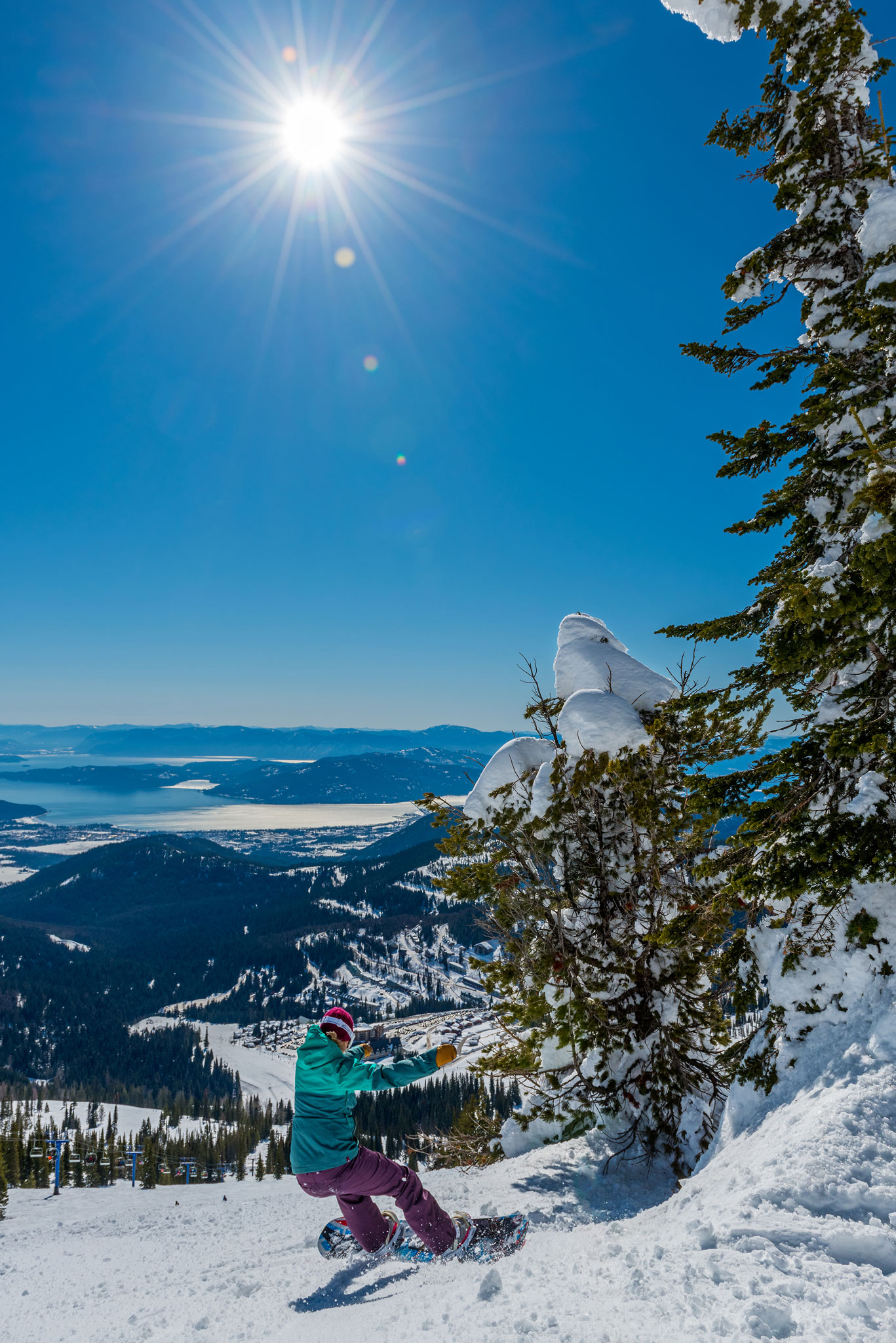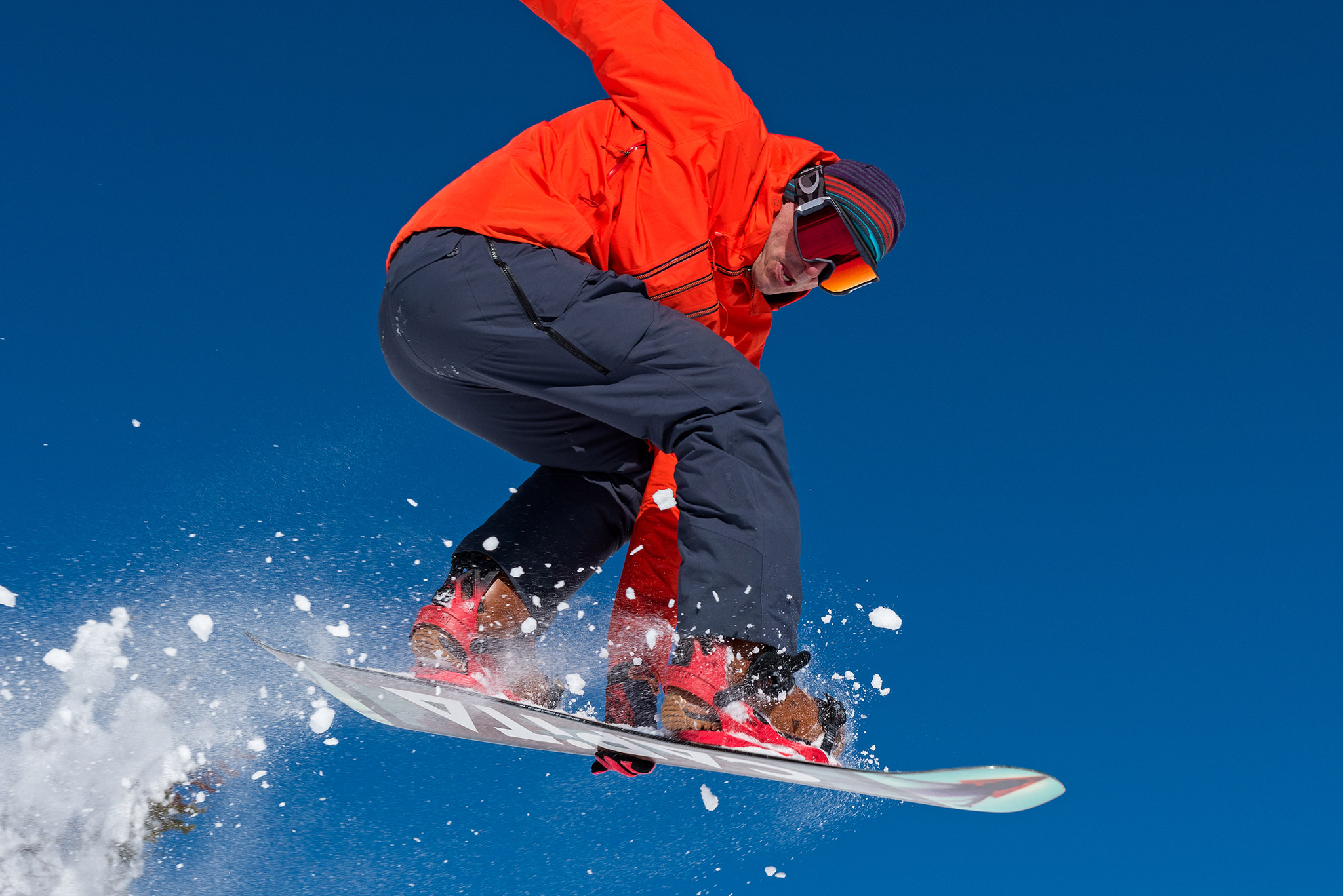
The morning sky is darker than the pot of coffee thrill-seeker Jeff Yates is going to make shortly after his alarm goes off.
He barely opens his eyes as he rolls over and opens the list of favorite contacts on his phone, then almost blindly touches the screen on the same spot he has so many other cold winter mornings: the Schweitzer ski report.
An almost too chipper voice comes over the speaker announcing cheerily the news Jeff had hoped to hear: “6 fresh inches overnight at 20 degrees and still snowing hard.”
That bit of news makes it almost easy to hop out of bed and start moving. Nothing gets a powder hound rolling faster than the prospect of fresh turns on the hill.
Coffee in hand, Jeff steps out of the door and heads for the car where he finds his gear bag and boots, which he loaded the night before to save precious powder time. On top of the car is a freshly waxed snowboard prepped and ready for a day of powder slaying. The smell of the hot coffee fills the car as the headlights pierce the snow-filled darkness, and he heads out.
After a drive filled with much anticipation, Jeff and his snowboarding partner for the day Coeur d’Alene real estate agent Gretchen Vedel arrive at the Schweitzer Mountain parking lot to find everything covered in a fresh blanket of white.
As they hop out of the car they pass several skiers struggling to cram their feet into stiff plastic shells. The two discuss how happy they are to be snowboarders and as such get to wear much warmer, more comfortable and easier-to-get-on-your-feet boots.
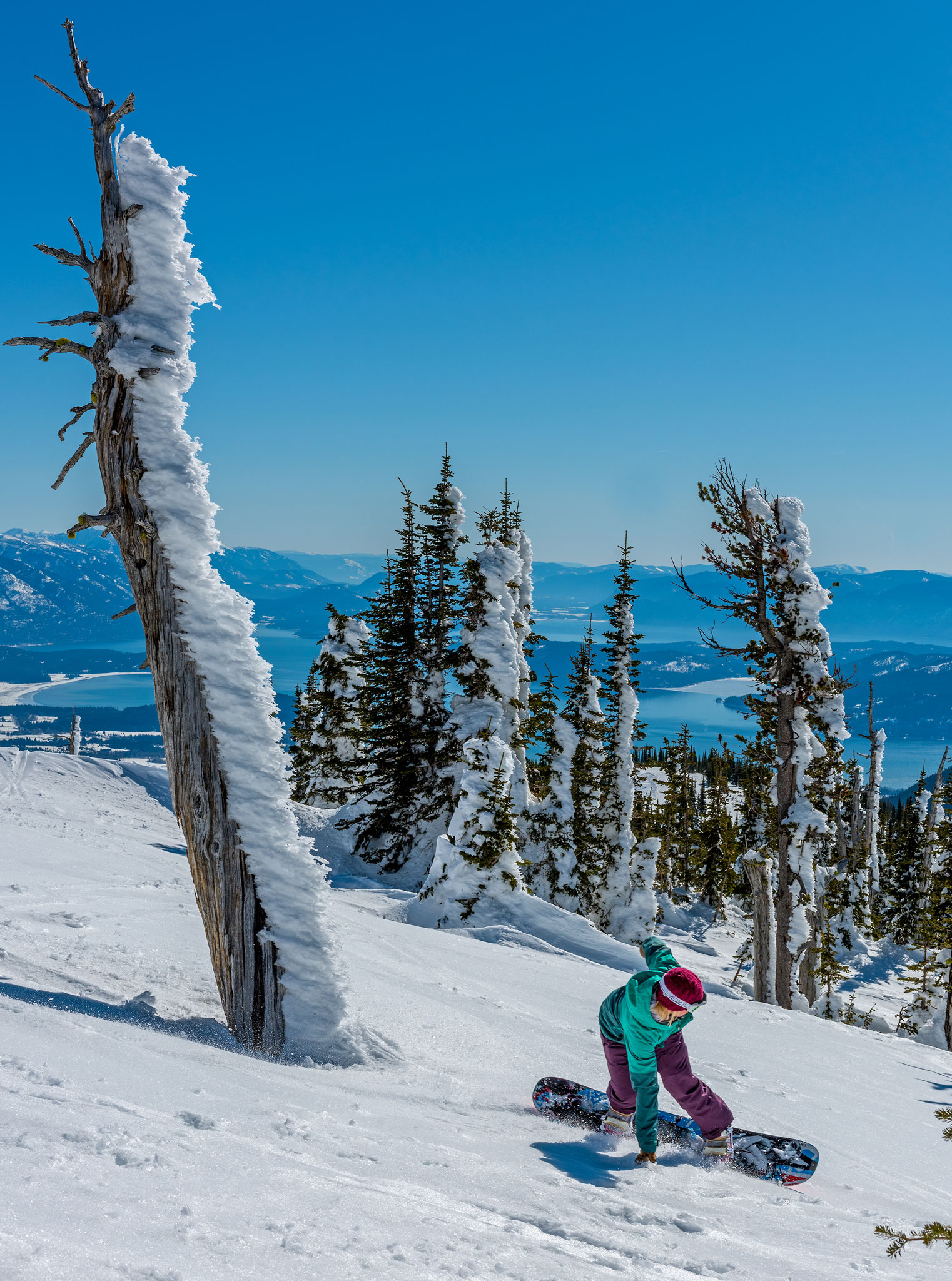
While they walk, there is further discussion about the reasons to snowboard versus ski. The equipment is cheaper, there are less moving parts when riding and there are fewer things to carry as you make the trek to the lift. In fact, many mornings, they decide, a lot of the skiers seem to be stuck at their cars gathering up belongings when the two snowboarders are already in the lift line.
If you happened to catch sight of Jeff and Gretchen mid-run from the lift on a fresh powder day like this one, you’d see something to behold. It’s a fluid act that brings together both power and beauty in a way that would make you wish you were living the experience. It’s a snowboarder who is laid full over, a singular edge carving deep into the fluffy snowpack with an outstretched arm skimming the surface.
Before you have the time to consider the physics that make such a move possible, that same snowboarder has somehow rotated in the other direction and deftly dug the heel edge of the board even further into untouched snow. Then, almost magically, the boarder disappears into a white room of billowing powder spray only to appear on the other side a split second later in time to hit repeat and start the glorious sequence all over again.
» BIRTH OF THE BOARD:
After witnessing such a thing of beauty you might just find yourself wondering how did this sport come to be? What wonderful daydreamer conceived of such an act?

There’s almost no doubt that the idea was always there. After all, who wouldn’t want to slide through the snow carving a buttery smooth line into the powder all the while creating an indelible line on the slope?
There are many tales of early snowboarding type activities. In Austria, as far back as the 16th century, there was a wooden board with a rope or handlebar nicknamed the knappenross. The Swiss had a similar device called the rittpritt. The Turks are said to have been riding standing sideways on a toboggan-style board known as the Lazboard for 400 years.
In Austria, as early as 1900, there was something known as the monogleider, and there are even claims of U.S. soldiers sliding downhill through the snow while standing sideways on barrel staves during the first World War.
Story continues after a quick message from our sponsor below.
Whoever first decided to stand up on a sled or a board or perhaps even a barrel stave and make it happen is a question we’ll likely never know the answer to. But what is known is that in 1965 an engineer from Muskegon, Mich. named Sherman Poppen created a single-board device with a pointed nose and a rope attached to it known as the Snurfer, which became the birth of what is now known around the globe as modern snowboarding.
While Poppen’s invention was really the first commercial snowboard-type device, it was around that same time that a seventh-grader living in New Jersey named Tom Sims combined his love of skiing and skateboarding into a woodshop class project and created the “skiboard.”
In the early days of the sport, others began to tinker with snowboard designs including the man many people incorrectly associate with the invention of the snowboard, Jake Burton.
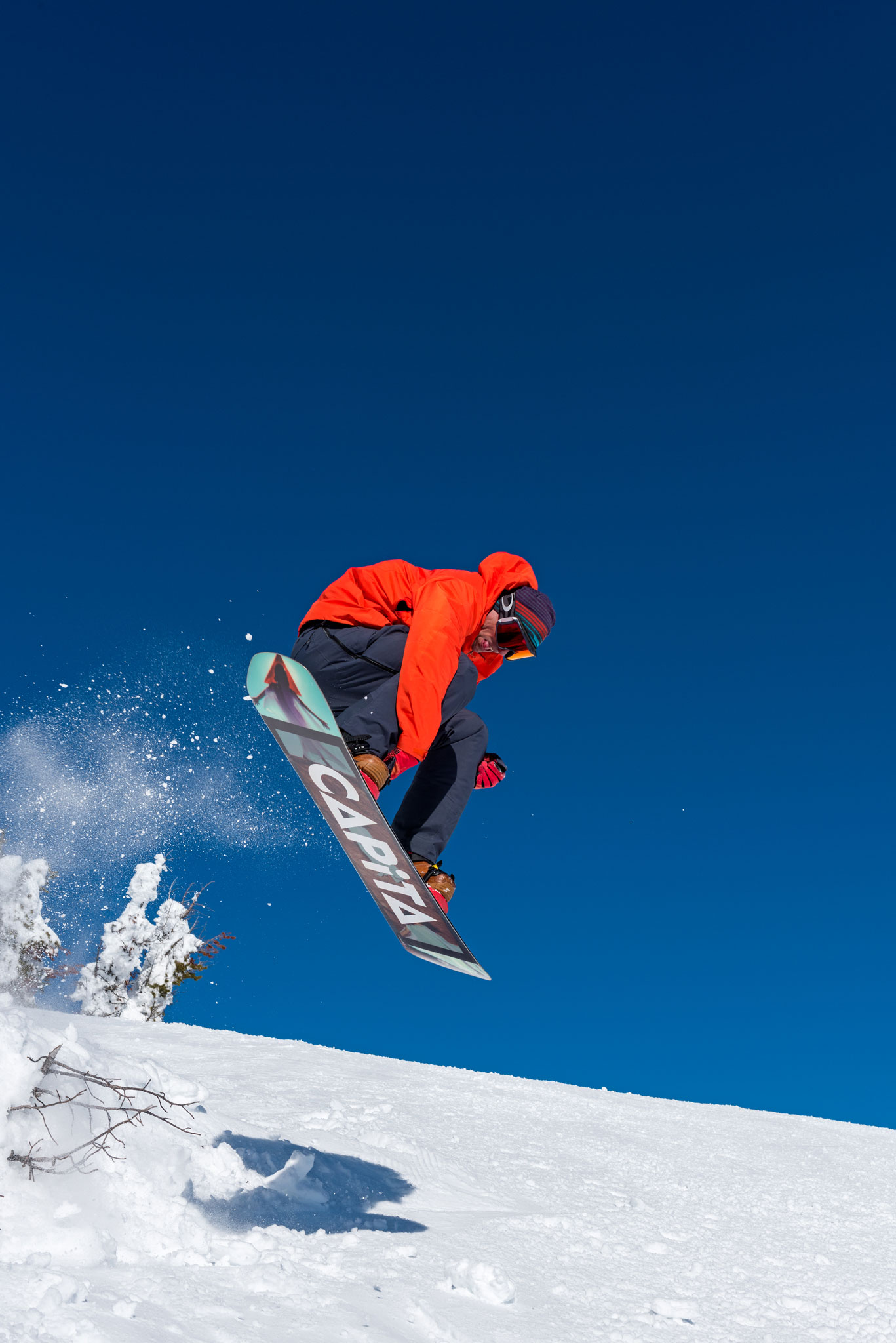
Jake, like Tom and so many others, began his trek down the path to a life filled with snowboarding by riding small local hills on a Snurfer. With an eye toward taking snowboarding to a much broader audience, Jake founded Burton Snowboards and took his first products to a trade show in 1977. He ended up selling only two units. In the 1978 season, however, he sold 300 units and felt the beginnings of a movement.
Although Jake didn’t apparently realize it, another snowboard pioneer, Dimitrije Milovich, had started manufacturing snowboards a few years earlier when he founded the now legendary Winterstick in Salt Lake City in 1974.
While Dimitrije pioneered some early snowboarding technology such as polyethylene bases and fiberglass in the structure, he was heartbroken when he traveled with his products to several ski shows in 1977 and no one seemed very interested. Nevertheless, he persevered and the early 80’s Wintersticks were a cult phenomenon in Europe, thanks largely to their appearance in the snow sports classic film Apocalypse Snow.
» COMPETITIVE SPORT:
As the popularity of snowboarding began to grow it was given a huge shot to the arm in the form of competitions. The first national snowboarding contest was held in April 1981 at Ski Copper in Colorado and included three categories: slalom, freestyle and downhill.
A couple of notable competitors at that first event were Sims and Burton. In 1985, the competition was moved to Stratton Mountain in Vermont and renamed the U.S. Open Snowboarding Championship.
The event is now considered one of snowboarding’s most prestigious and draws as many as 30,000 spectators.
Over time, the competitions have changed shape and grown to include customary halfpipe competitions. Other unique snowboarding events have been created as well, such as the legendary Mount Baker Banked Slalom, which began in 1985 and is still extremely popular today.
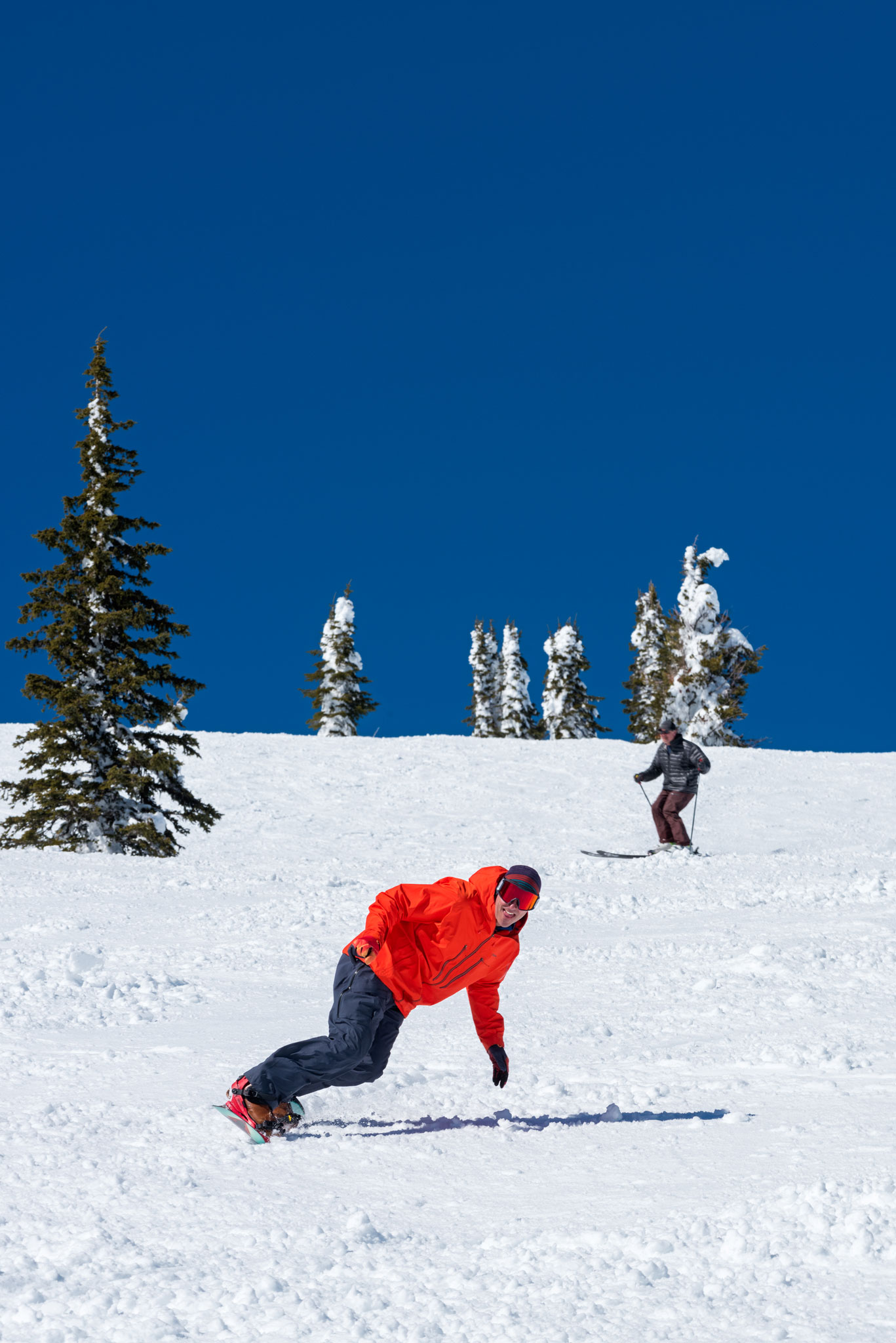
Anther huge leap forward for the sport was acceptance as an Olympic event for the first time in 1998 at the Winter Olympics held in Nagano, Japan. There, only four snowboarding events were included. The number has since grown, and at the 2018 Winter Olympics there were 10 events featuring athletes from 30 nations. Since the mid-90s, snowboarding has also been a World Cup event featuring a variety of events.
» WIDESPREAD BAN:
Although today snowboarding is extremely popular and almost universally accepted at resorts around the world, it wasn’t always this way.
As snowboarding gained a following, there were detractors to be found. In the early 80s, many ski areas and resorts across the country didn’t allow snowboarding at all, citing reasons such as insurance liability and their perception of snowboarders as bad boy rebels.
While there were bumps along the way, such as some resorts requiring snowboarders to pass riding proficiency tests, by the mid-80s approximately 40 percent of North American resorts allowed snowboarding.
As of today, there are only three remaining holdouts that continue to ban snowboarding: Deer Valley and Alta, both in Utah, and Mad River Glen in Vermont.
To her, snowboarding is almost like surfing, where you can “ride a line as nature presents it.”
UNDENIABLE APPEAL:
Jeff and Gretchen fully understand the draw of boarding. They’ve been doing it for decades now.
Jeff, who first began slaying snowy slopes on skis, decided to give riding sideways a try in the 80’s after looking down from the chairlift at Silver Mountain and seeing someone riding a snowboard. He was attracted to it simply because it meant doing something different, an idea that has always appealed to him.
He loves the control he feels when shredding a wide-open slope and the opportunity it presents to “dig in and displace as much frozen water as possible.”
Gretchen got on board, literally, a bit later on in the early 90’s when she found snowboarding to be a natural transition from competitive wakeboarding. Also, having grown up in gymnastics, she found the fluid nature of the sport to be a natural match with her style. She loves the concept of being able to be out enjoying the peace and quiet of nature yet still getting to feel like part of a slightly fringe group that many people do not understand.
To her, snowboarding is almost like surfing, where you can “ride a line as nature presents it.”
For those many snow shredders out there who have fallen in love with snowboarding there’s no fighting the attraction to the feeling of freedom it offers. That feeling of digging in deep, of floating effortlessly, of using nature’s playground as it presents itself all while blazing a singular unique pathway through the powder is something that just simply can’t be denied. N
By John Grollmus
Photography By Joel Riner
As Featured In: 2019 Winter/Spring CDA Edition
